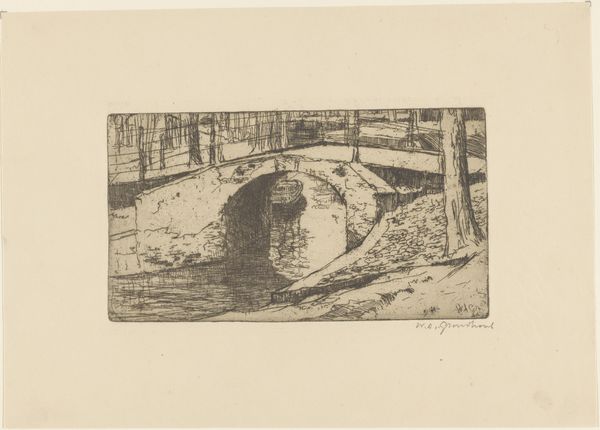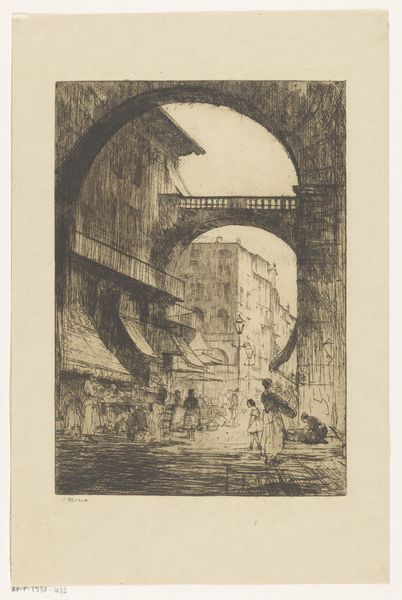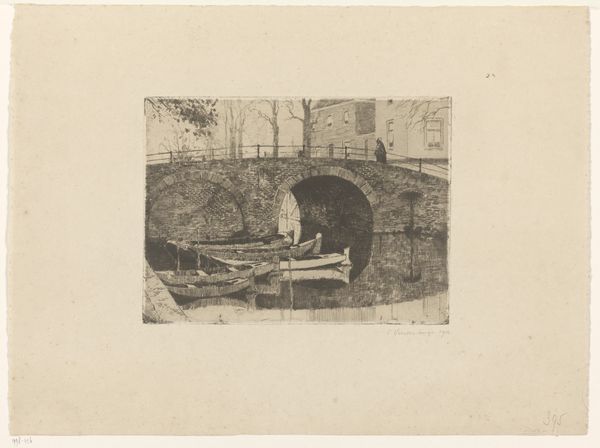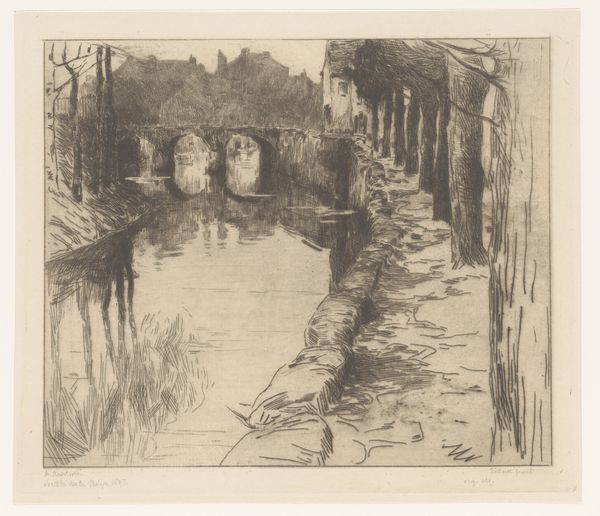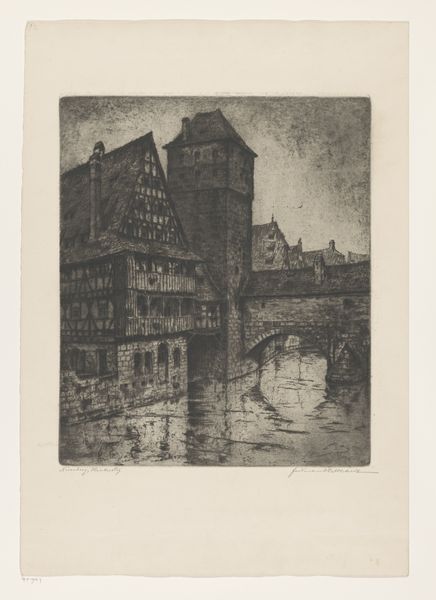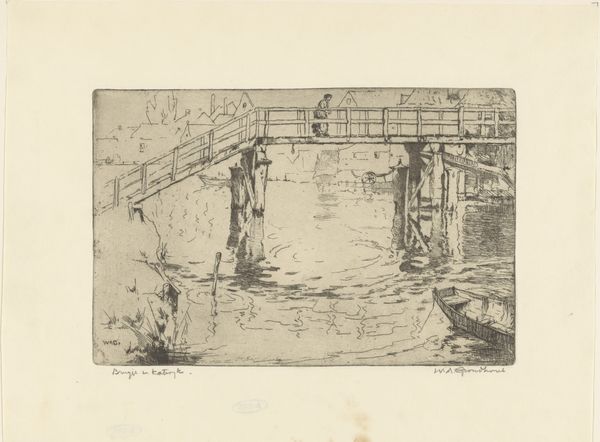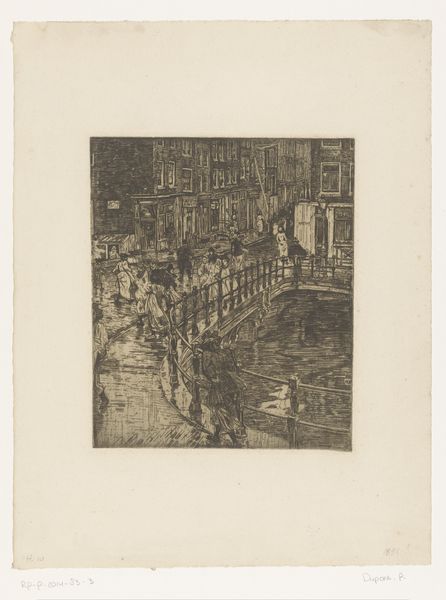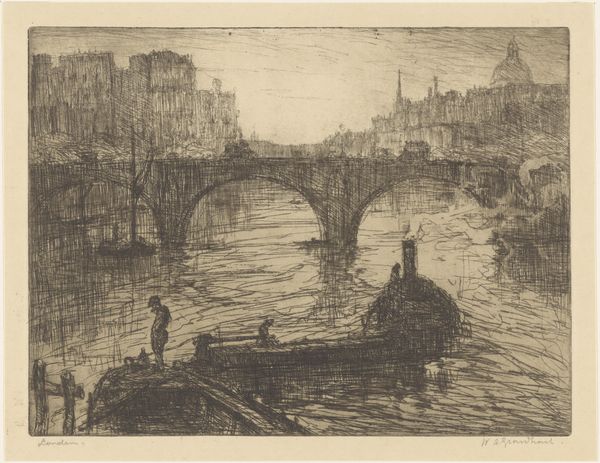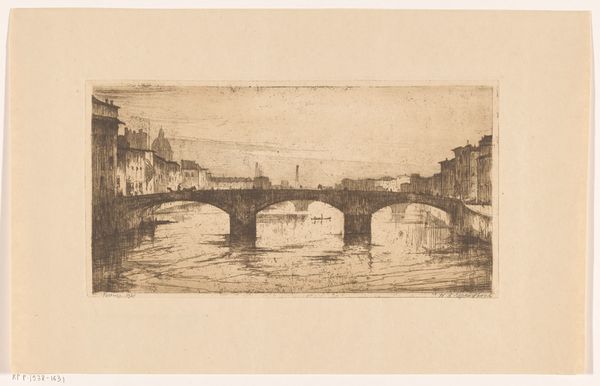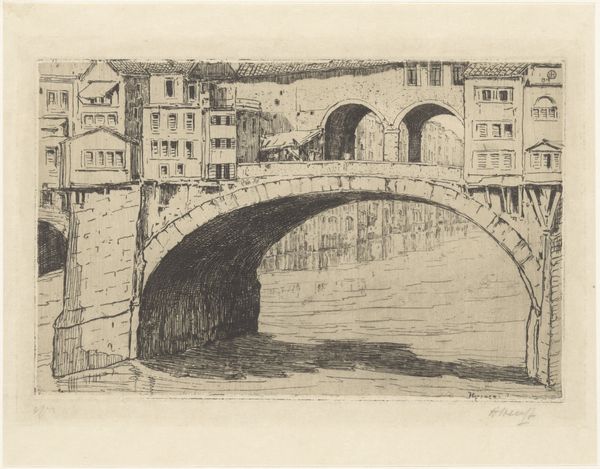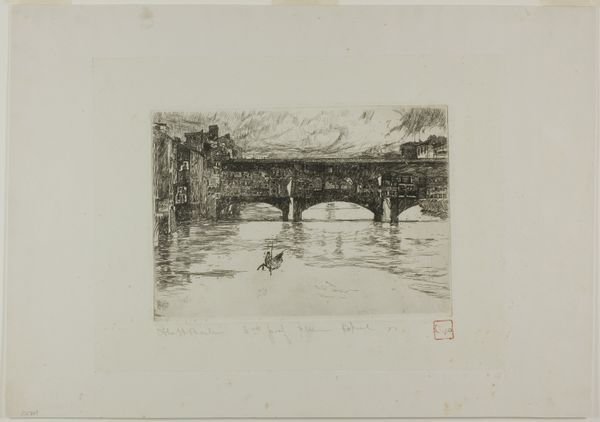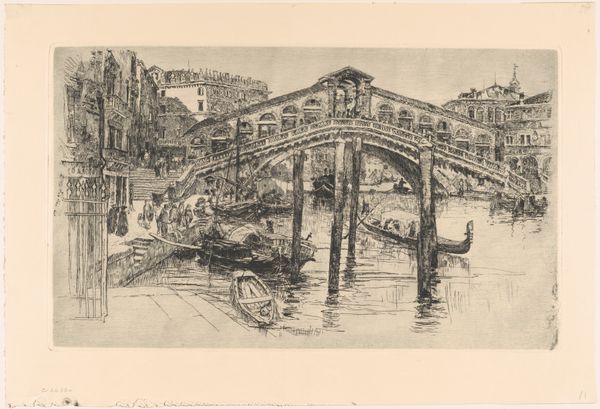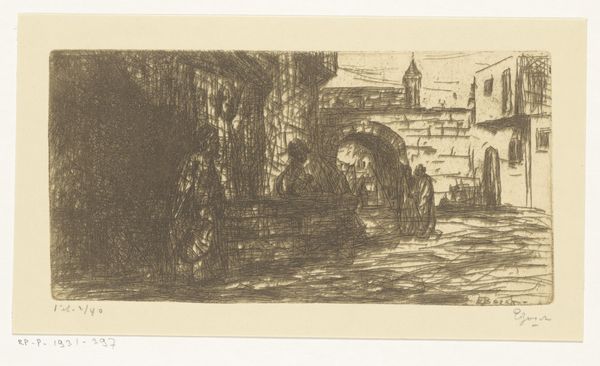
Dimensions: height 330 mm, width 385 mm
Copyright: Rijks Museum: Open Domain
Curator: Here we have Pieter Dupont's "Pont de la Tournelle in Parijs," an etching from 1898. It's a compelling example of impressionistic printmaking. What are your initial thoughts? Editor: Gloomy, wouldn’t you say? It has that slightly sinister, churning-water-under-the-bridge feeling. Very brooding, in a fin-de-siècle sort of way. The perspective makes it almost claustrophobic. Curator: Interesting observation. Dupont captures the bridge at a steep angle, which is somewhat unusual, and his detailed treatment is interesting given the medium, right? This captures not only the likeness of this particular structure, but suggests how infrastructure can symbolize societal order. Editor: Yes, but I keep going back to those waves, their swirling energy contrasting against the hard, fixed architecture above. Almost like the subconscious challenging rational structure. Makes me wonder what Dupont was feeling! Curator: Possibly! Etchings like these played a key role in circulating images of Paris. Consider this from a publishing point of view: Dupont’s etching makes Paris accessible, a consumer good enjoyed in domestic spaces. What is public, what is private becomes fluid here. Editor: That's one way to look at it. For me, it is also very dreamlike, I mean, look at those clouds and how heavy is the bridge rendered. This must be also a reflection on time itself. After all, isn't the "eternal" Paris simply accumulating moments of change like those swirls in the river? Curator: The texture that Dupont achieves is very successful and helps reinforce the artist’s vision, but perhaps overemphasizing personal sentiments misses an opportunity to study the rise of mass media at the time? Editor: Fair point. And yet, as viewers, aren’t we all just a bit…subjective? Mass media exists, then and now, to be filtered, digested, even dreamt about. Curator: True enough. On that note, perhaps each perspective contributes to a better understanding. Editor: Precisely! I'd say looking and interpreting it openly gives back to the artist. What a legacy to consider.
Comments
No comments
Be the first to comment and join the conversation on the ultimate creative platform.
